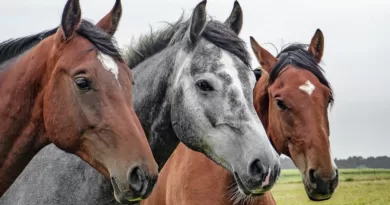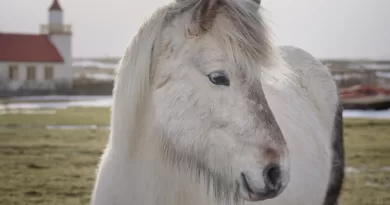Can Horses Have Twins
Understanding Equine Reproduction: A Fascinating Journey
Successful equine reproduction is a fascinating journey that requires a delicate balance of timing, hormonal changes, and proper care. The process begins with the mare coming into heat, also known as estrus, which typically occurs during the spring and summer months. During this time, the mare’s reproductive system undergoes remarkable transformations, including follicle development and ovulation.
Once the mare ovulates, a mature egg is released from one of her ovaries and begins its journey down the fallopian tube. Meanwhile, the stallion’s role comes into play as he produces millions of sperm cells during breeding. These sperm cells eventually travel through the mare’s reproductive tract, encountering potential obstacles along the way, such as the acidic environment of the vagina. However, those that manage to survive and reach the egg have the opportunity to fertilize it, initiating the miraculous process of conception.
The Miracle of Multiple Births in Horses
Multiple births, although considered rare in horses, are indeed a truly remarkable occurrence. The birth of twins, also known as twin foals, is a phenomenon that captivates the attention and curiosity of many equine enthusiasts. Witnessing two healthy foals being born from a single mare is an awe-inspiring sight that showcases the incredible capabilities of equine reproduction. The presence of multiple foals not only fills the hearts of horse owners with joy and excitement but also presents unique challenges that require careful management and monitoring.
The occurrence of twin foals in horses is a complex process that is influenced by various factors. One of the primary factors is genetics, as certain breeds are more prone to producing twins than others. Additionally, the mare’s age, reproductive history, and overall health can impact the likelihood of multiple births. Environmental factors, such as climate and geographical location, can also play a role in the occurrence of twin pregnancies. While the incidence of twin foals remains relatively low, understanding the factors that contribute to these rare occurrences is crucial for their early detection and successful management.
Factors Influencing the Occurrence of Twin Foals
Twin foals are considered a rarity in the equine world, and their occurrence is influenced by several factors. One of the primary factors is the age of the mare. Younger mares, typically under the age of six, have a higher chance of producing twins. This is because their reproductive system is still maturing and may release multiple eggs during ovulation. However, as mares age, their chances of producing twins decrease significantly.
Another important factor that influences the occurrence of twin foals is genetics. Certain breeds have a higher predisposition to producing twins, such as Thoroughbreds and Warmbloods. Additionally, the genetic background of the mare can also play a role. Mares with a family history of twinning are more likely to produce twins themselves. While the exact genetic mechanisms behind twinning in horses are not yet fully understood, ongoing research is shedding light on this fascinating aspect of equine reproduction.
Exploring the Rarity: Twinning in Horses
Twinning in horses is an incredibly rare occurrence, making it a fascinating subject of study for equine enthusiasts and researchers alike. Unlike other species where multiple births are relatively common, such as humans and certain types of livestock, twin foals are a true rarity in the horse world. While the chances of twinning naturally vary among different breeds and genetic factors, it is estimated that twin pregnancies occur in approximately 1.6% of all equine pregnancies.
The rarity of twinning in horses can be attributed to several biological factors. Unlike humans and some animals, horses have a unique reproductive system that makes the occurrence of twins less likely. Females of most species typically release only one egg per ovulation cycle, which significantly reduces the chance of multiple pregnancies. Additionally, the anatomy of the mare’s reproductive tract and the physical limitations of the uterus make it difficult for multiple embryos to develop and survive. These factors contribute to the astonishing rarity and intrigue surrounding twin foals in the equine world.
The Challenges Faced by Twin Foals in their Development
Twin foals, although captivating and rare, face numerous challenges in their development. One of the main concerns is their size and weight. Twin foals are typically smaller and lighter compared to singleton foals, making them more vulnerable to various health issues. These tiny foals often struggle with weak immune systems, making them more susceptible to infections and diseases. Additionally, their smaller size may lead to growth and developmental delays, posing long-term obstacles.
Furthermore, the competition for resources between the twin foals is another challenge they encounter. Despite being born from a single mare, twin foals must compete for nutrition and nourishment. The mare’s milk production may not be sufficient to meet the demands of both foals, resulting in malnourishment and stunted growth for one or both. This intensified competition can also lead to behavioral problems and potential aggression between the foals as they vie for their share of resources. Consequently, extra care and monitoring are crucial to ensure both twin foals receive adequate nutrition and proper growth during their vital early stages.
Identifying Twin Pregnancies in Mares: Signs and Symptoms
Twin pregnancies in mares can be a fascinating but challenging phenomenon to identify. Unlike in humans, where ultrasound is commonly used, detecting twin pregnancies in mares relies mainly on the expertise and palpation skills of experienced veterinarians.
One of the common signs of a twin pregnancy in mares is an unusually large abdomen. As the fetuses grow, the mare’s belly may appear abnormally distended, often beyond what would be expected for a single foal. Additionally, the mare’s mammary glands may become enlarged and produce milk earlier than usual. These visible indications can raise suspicion of a twin pregnancy but must be confirmed through further examination.
The Importance of Early Detection and Management of Twin Pregnancies
Effective management of twin pregnancies in horses is crucial for ensuring the health and well-being of both the mare and the foals. Early detection plays a pivotal role in determining the best course of action. Ultrasound examinations performed by skilled veterinarians can accurately identify twin pregnancies as early as 14 to 16 days after conception. This allows for timely intervention and reduces the likelihood of complications during gestation and foaling.
Once twin pregnancies are detected, appropriate management strategies need to be implemented. The most common approach is reduction, where one of the embryos is selectively removed to allow for a single healthy pregnancy. This procedure is typically performed between 16 and 40 days after conception, depending on the specific circumstances. However, it should be noted that reduction is not without risks and should only be carried out by experienced veterinarians under sterile conditions. Early detection and proper management of twin pregnancies are vital for safeguarding the health of the mare and increasing the chances of a successful outcome for the foal.
Twin Foaling: Risks and Complications
Twin foaling, although a fascinating phenomenon, comes with its fair share of risks and complications. The presence of two developing foals in the mare’s womb can lead to a multitude of challenges during the birthing process. Firstly, there is an increased risk of dystocia, or difficult birth, as the two foals may struggle to pass through the birth canal simultaneously, causing complications for both the mare and the foals. Additionally, the uterus may not have enough space to support the proper development of both foals, resulting in stunted growth or other developmental issues. These risks highlight the need for careful monitoring and management of twin pregnancies in horses.
• Dystocia, or difficult birth, is a major risk in twin foaling.
• The presence of two foals can cause complications during the birthing process.
• The foals may struggle to pass through the birth canal simultaneously.
• Insufficient space in the uterus can lead to stunted growth and developmental issues.
Successful Strategies for Dealing with Twin Pregnancies in Horses
Successful strategies for dealing with twin pregnancies in horses are essential in ensuring the health and well-being of both the mare and the foals. One such strategy is the early detection of twin pregnancies through regular veterinary examinations. By closely monitoring the mare’s reproductive health through ultrasound scans, veterinarians can identify the presence of multiple embryos and take appropriate action to avoid potential complications.
In cases where twin embryos are detected, one effective strategy is the reduction of one of the embryos to increase the chances of a successful pregnancy. This procedure, known as twin reduction, involves removing one of the embryos to allow the remaining one to develop properly. While the process may carry some risks, it can significantly improve the chances of a successful outcome for both the mare and the remaining foal. Proper timing and the expertise of a skilled veterinarian are crucial in carrying out this procedure safely.
Celebrating the Arrival of Twin Foals: A Joyous Occasion
Twin foals, a rare and extraordinary occurrence in the equine world, bring immense joy and excitement to horse breeders and enthusiasts alike. The arrival of twin foals is indeed a cause for celebration, as it showcases the incredible resilience and tenacity of both the mare and her offspring. Observing these adorable bundles of energy frolicking in the fields, a sight that is double the delight, is truly a moment to cherish.
The birth of twin foals represents a remarkable event in the equine community, often regarded as a stroke of luck or even a blessing. It is a testament to the mare’s reproductive abilities and the persistence of the embryos to thrive and develop. As the two foals take their first wobbly steps and nuzzle against their doting mother, the atmosphere is filled with wonder and awe. This joyous occasion brings together breeders, owners, and horse lovers, who gather to witness the miracles of nature unfold before their eyes.
What is equine reproduction?
Equine reproduction refers to the process by which horses reproduce and give birth to offspring.
How often do horses give birth to twins?
Twin births in horses are quite rare, occurring in only about 1-2% of pregnancies.
What factors influence the occurrence of twin foals?
Factors such as mare age, breed, genetics, and reproductive techniques can increase the likelihood of twin pregnancies in horses.
Are twin foals considered a miracle?
Yes, twin foals are considered a miracle in the equine world due to their rarity and the challenges they face in development.
What challenges do twin foals face in their development?
Twin foals often face competition for nutrients and space in the mare’s womb, which can lead to stunted growth and other developmental issues.
How can twin pregnancies in mares be identified?
Twin pregnancies in mares can be identified through ultrasounds, which can detect the presence of multiple embryos.
Why is early detection and management of twin pregnancies important?
Early detection and management of twin pregnancies is important to minimize the risks and complications associated with carrying and delivering twin foals.
What are the risks and complications of twin foaling?
Twin foaling can result in premature birth, malpositioning of the foals, and difficulties during labor and delivery, which can put both the mare and foals at risk.
What are some successful strategies for dealing with twin pregnancies in horses?
Strategies such as manual reduction, embryo transfer, and careful monitoring can be employed to manage twin pregnancies in horses and increase the chances of a successful birth.
Why is the arrival of twin foals considered a joyous occasion?
The arrival of twin foals is considered a joyous occasion because it is a rare and special event in the world of equine reproduction, often seen as a blessing and cause for celebration.




